Click on images to enlarge
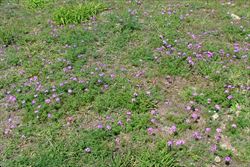
infestation (Photo: Sheldon Navie)
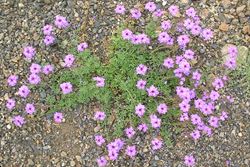
habit (Photo: Sheldon Navie)
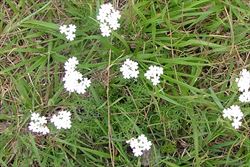
habit (Photo: Sheldon Navie)
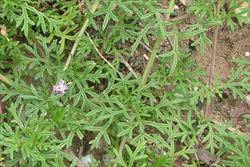
creeping stems and deeply-divided leaves (Photo: Sheldon Navie)

close-up of leaves (Photo: Forest and Kim Starr, USGS)
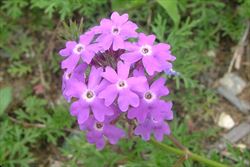
mauve flowers (Photo: Sheldon Navie)
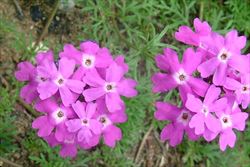
pink flowers (Photo: Sheldon Navie)
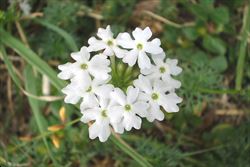
white flowers (Photo: Sheldon Navie)
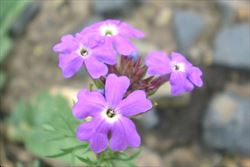
close-up of flowers (Photo: Sheldon Navie)
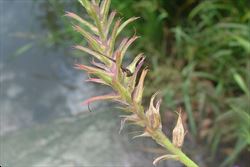
close-up of immature fruit (Photo: Sheldon Navie)
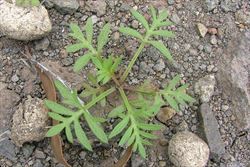
seedling (Photo: Sheldon Navie)

young plant (Photo: Sheldon Navie)
Scientific Name
Glandularia aristigera (S. Moore) Tronc.
Synonyms
Glandularia tenuisecta (Briq.) SmallVerbena aristigera S. MooreVerbena dissecta MorongVerbena erinoides Lam. (misapplied)Verbena tenera Spreng.Verbena tenuisecta Briq.
Family
Verbenaceae
Common Names
desert verbena, fine leafed verbena, Mayne's curse, Mayne's pest, moss verbena, South American mock vervain, tuber vervain, verbena, wild verbena
Origin
Native to South America (i.e. southern Brazil, Bolivia, Peru, Argentina, Paraguay and Uruguay).
Naturalised Distribution
This species is very widely naturalised in southern and eastern Australia (i.e. in southern and central Queensland, in New South Wales, in southern and north-western Victoria, in naturalised the southern parts of South Australia and in some parts of south-western and southern Western Australia). It is also occasionally naturalised in central Australia (i.e. in the southern parts of the Northern Territory).
Notes
Mayne's pest (Glandularia aristigera) is most abundant in sub-coastal and inland districts in the eastern parts of the country, but it is also relatively common in coastal regions. It is a mainly known as a weed of agricultural areas and habitation (e.g pastures, crops, roadsides, railways, disturbed sites and waste areas), but also invades native vegetation such as open woodlands, grasslands and coastal environs. Mayne's pest (Glandularia aristigera) is now regarded as an environmental weed in the Northern Territory, and also in some parts of Queensland and New South Wales.
This species is has been deliberately cultivated as a garden ornamental, and was recently listed as one of the the top ten most serious invasive garden plants in the arid areas of the Northern Territory that is still available for sale. Mayne's pest (Glandularia aristigera) is also listed as an environmental weed by the Ipswich City Council in south-eastern Queensland, and is a common weed in the riparian zones of the Moonie and Balonne Rivers in inland southern Queensland. It is also regarded as a widespread environmental weed throughout the Hunter Catchment in central New South Wales and has been recorded in conservation areas in in inland northern New South Wales (e.g. in Arakoola Nature Reserve and Kwiambal National Park).
While also being present in warmer temperate areas in Western Australia and South Australia, Mayne's pest (Glandularia aristigera) is mainly limited to roadsides and disturbed sites in these states. It is currently, therefore, not usually regarded as an environmental problem in these states.

